 Search by Keyword
|
"LONG, LONG, LONG"
(George Harrison)
There are many songs in the vast Beatles catalog that can claim the status of "most underrated." Among the 30 tracks that are contained on their masterful 1968 double-album "The Beatles," better known as the "White Album," George's ballad "Long, Long, Long" surely attains that status, as well as holding the title of "most overlooked."
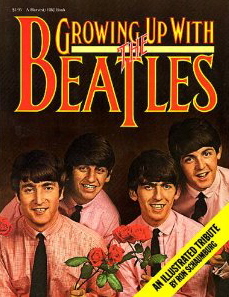 Amidst the sprawling and attention-getting variety of songs on the album, from the poppy “Ob-La-Di, Ob-La-Da,” the menacing “Happiness Is A Warm Gun,” the earthy “Yer Blues,” and the countrified “Don't Pass Me By,” George's “Long, Long, Long” can almost slip by unnoticed. Appearing directly after the ear-splitting “Helter Skelter,” many listeners in 1968 thought that side three of the album was complete and reached to turn the record over before realizing there was indeed another song after it. As Ron Schaumburg writes in his book “Growing Up With The Beatles, “'Long, Long, Long' is a spacey, ethereal popover that I had to listen to six or eight times before I finally could hear it.” Amidst the sprawling and attention-getting variety of songs on the album, from the poppy “Ob-La-Di, Ob-La-Da,” the menacing “Happiness Is A Warm Gun,” the earthy “Yer Blues,” and the countrified “Don't Pass Me By,” George's “Long, Long, Long” can almost slip by unnoticed. Appearing directly after the ear-splitting “Helter Skelter,” many listeners in 1968 thought that side three of the album was complete and reached to turn the record over before realizing there was indeed another song after it. As Ron Schaumburg writes in his book “Growing Up With The Beatles, “'Long, Long, Long' is a spacey, ethereal popover that I had to listen to six or eight times before I finally could hear it.”
In later years, however, this track has begun to get the attention and praise it truly deserves. We'll attempt to do the song justice here as well.
Songwriting History
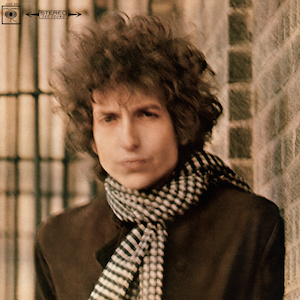 Between February and April of 1968, George Harrison was in India studying Transcendental Meditation with the Maharishi, the other Beatles also being present for a good portion of this time. Although they swore off most of their creature comforts for this spiritually rejuvenating trip, presumably including drugs, the one thing George reportedly did bring with him was a copy of Bob Dylan's 1966 album "Blonde On Blonde." The final track on that album, the eleven minute "Sad Eyed Lady Of The Lowlands," expecially struck a chord with George. Between February and April of 1968, George Harrison was in India studying Transcendental Meditation with the Maharishi, the other Beatles also being present for a good portion of this time. Although they swore off most of their creature comforts for this spiritually rejuvenating trip, presumably including drugs, the one thing George reportedly did bring with him was a copy of Bob Dylan's 1966 album "Blonde On Blonde." The final track on that album, the eleven minute "Sad Eyed Lady Of The Lowlands," expecially struck a chord with George.
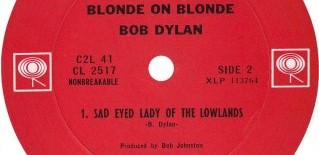 "I can't recall much about it except the chords,” George related about the song "Long, Long Long" in his 1980 book “I Me Mine,” “which I think were coming from (Dylan's) 'Sad Eyed Lady Of The Lowlands' – D to E minor, A and D – those three chords and the way they moved." Kevin Howlett, in his "Track By Track" liner notes from the 50th Anniversary release of the "White Album," expounds that the "similarity is only slight; the musical parallel between the two is more to do with the hypnotic mood both recordings create.” "I can't recall much about it except the chords,” George related about the song "Long, Long Long" in his 1980 book “I Me Mine,” “which I think were coming from (Dylan's) 'Sad Eyed Lady Of The Lowlands' – D to E minor, A and D – those three chords and the way they moved." Kevin Howlett, in his "Track By Track" liner notes from the 50th Anniversary release of the "White Album," expounds that the "similarity is only slight; the musical parallel between the two is more to do with the hypnotic mood both recordings create.”
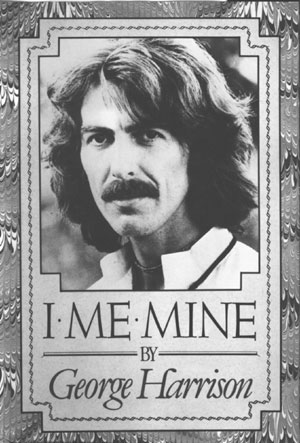 Although the sentiments expressed in the lyrics appear to be concerning his rekindled love with a woman, George insists otherwise. “The 'you' in 'Long, Long, Long' is God,” he explains in the book “I Me Mine.” Nonetheless, the ambiguous nature of the lyrics helps endear them to the listener who may either interpret the track as a romantic love song or as a deep expression of grateful reconnection to his creator. Therefore, lyrics such as "how I want you," "how I love you" and "you know that I need you" work both ways, and phrases such as "so many tears I've been wasting" can easily be interpreted as the effects of an estrangement from his lady friend, but ultimately refer to the pain felt in his life experiences before achieving his newly found enlightenment. “I think all love is part of a universal love,” George stated to Rolling Stone magazine, adding, “When you love a woman, it's the God in her that you see. The only complete love is for God." Although the sentiments expressed in the lyrics appear to be concerning his rekindled love with a woman, George insists otherwise. “The 'you' in 'Long, Long, Long' is God,” he explains in the book “I Me Mine.” Nonetheless, the ambiguous nature of the lyrics helps endear them to the listener who may either interpret the track as a romantic love song or as a deep expression of grateful reconnection to his creator. Therefore, lyrics such as "how I want you," "how I love you" and "you know that I need you" work both ways, and phrases such as "so many tears I've been wasting" can easily be interpreted as the effects of an estrangement from his lady friend, but ultimately refer to the pain felt in his life experiences before achieving his newly found enlightenment. “I think all love is part of a universal love,” George stated to Rolling Stone magazine, adding, “When you love a woman, it's the God in her that you see. The only complete love is for God."
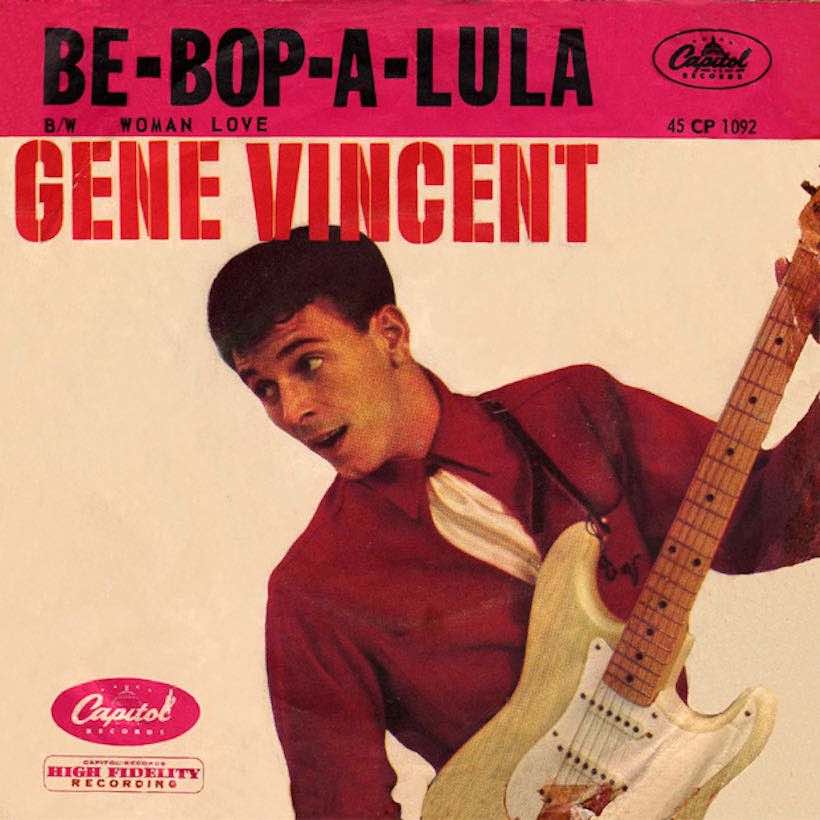 George once elaborated further about his reason for conveying a dual meaning in many of his compositions: "If you say the word God or Lord, it makes some people's hair curl! They feel threatened when you talk about something that isn't just 'Be-Bop-A-Lula' and if you say something that is not just trivia then their only way out of that is to say, 'You're lecturing us or you're preaching,' which it isn't. They just can't come to terms with the idea that there may just be something else going on apart from their individual egos." George once elaborated further about his reason for conveying a dual meaning in many of his compositions: "If you say the word God or Lord, it makes some people's hair curl! They feel threatened when you talk about something that isn't just 'Be-Bop-A-Lula' and if you say something that is not just trivia then their only way out of that is to say, 'You're lecturing us or you're preaching,' which it isn't. They just can't come to terms with the idea that there may just be something else going on apart from their individual egos."
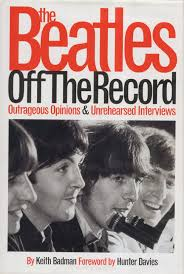 Originally titled “It's Been A Long Long Long Time,” Keith Badman's book “The Beatles Off The Record” states: “George scribbled the lyrics to 'Long, Long, Long' onto the pages of an empty 'week at a glance' diary page for 11-14 August, 1968.” Although this may not mean the song was written exactly on these days, it can be estimated to have been composed sometime during this month. Therefore, it wasn't written until the “White Album” was around half complete, other George Harrison compositions being dropped from consideration for the album along the way, these being “Not Guilty,” “Circles” and “Sour Milk Sea.” Originally titled “It's Been A Long Long Long Time,” Keith Badman's book “The Beatles Off The Record” states: “George scribbled the lyrics to 'Long, Long, Long' onto the pages of an empty 'week at a glance' diary page for 11-14 August, 1968.” Although this may not mean the song was written exactly on these days, it can be estimated to have been composed sometime during this month. Therefore, it wasn't written until the “White Album” was around half complete, other George Harrison compositions being dropped from consideration for the album along the way, these being “Not Guilty,” “Circles” and “Sour Milk Sea.”
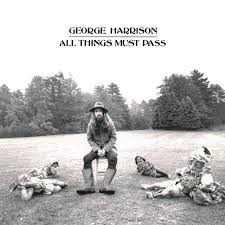 Although the above mentioned Bob Dylan song became a major influence on writing his song “Long, Long, Long,” George soon after struck up a long-lasting friendship with his idol. Just after the “White Album” was released, George traveled to Woodstock, New York and spent Thanksgiving 1968 with Bob and his recent collaborators The Band. At this time the two prolific songwriters composed their first collaborative effort entitled “I'd Have You Anytime,” this song gracing George's 1970 groundbreaking album “All Things Must Pass.” Decades later, they continued their songwriting partnership while in the supergroup The Traveling Wilburys. Although the above mentioned Bob Dylan song became a major influence on writing his song “Long, Long, Long,” George soon after struck up a long-lasting friendship with his idol. Just after the “White Album” was released, George traveled to Woodstock, New York and spent Thanksgiving 1968 with Bob and his recent collaborators The Band. At this time the two prolific songwriters composed their first collaborative effort entitled “I'd Have You Anytime,” this song gracing George's 1970 groundbreaking album “All Things Must Pass.” Decades later, they continued their songwriting partnership while in the supergroup The Traveling Wilburys.
Recording History
Sessions for the "White Album" began on May 30th, 1968, but it wasn't until the last week of recording that George's beautiful "Long, Long, Long" was first brought into the studio. This day was October 7th, 1968, The Beatles filing into EMI Studio Two at about 2:30 pm for what became a marathon 16 1/2 hour session, the long hours undoubtedly deemed necessary because of a deadline to complete the album in time for a late November release, thereby in time for Christmas gifts around the world.
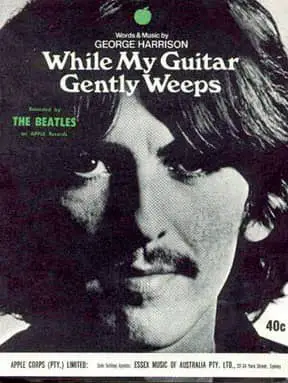 This session began with The Beatles assembling for some time in the control room to oversee tape copies being made of previously recorded tracks as well as stereo and mono mixes of George's “While My Guitar Gently Weeps” being attempted. While in the control room, as various pictures show, George began running through the song on acoustic guitar for his fellow bandmates to hear. They also enjoyed some dinner and snacks, a meal comprising of what looks like chicken, rice and bread along with Maryland cookies, milk for Ringo and a bottle of Blue Nun wine for George. This session began with The Beatles assembling for some time in the control room to oversee tape copies being made of previously recorded tracks as well as stereo and mono mixes of George's “While My Guitar Gently Weeps” being attempted. While in the control room, as various pictures show, George began running through the song on acoustic guitar for his fellow bandmates to hear. They also enjoyed some dinner and snacks, a meal comprising of what looks like chicken, rice and bread along with Maryland cookies, milk for Ringo and a bottle of Blue Nun wine for George.
 After dinner, George, Paul and Ringo (John was suspiciously absent on this day as he habitually was when a George composition was being recorded) settled down in the studio to work out an arragement for the song that George still called “It's Been A Long Long Long Time” at this point. No known demo versions have ever surfaced, so this appears to have been the first time that Paul and Ringo had ever heard the song. This would make sense since it took 67 takes to get a suitable rhythm track recorded on this day. After dinner, George, Paul and Ringo (John was suspiciously absent on this day as he habitually was when a George composition was being recorded) settled down in the studio to work out an arragement for the song that George still called “It's Been A Long Long Long Time” at this point. No known demo versions have ever surfaced, so this appears to have been the first time that Paul and Ringo had ever heard the song. This would make sense since it took 67 takes to get a suitable rhythm track recorded on this day.
 Mark Lewisohn's book “The Beatles Recording Sessions” explains the atmosphere on this day: “The session tapes reveal that George was in a happy mood throughout, laughing, joking and bursting into busked versions of other songs, including 'Dear Prudence.'" The first four tracks of the eight-track tape were utilized for these 67 takes of "Long, Long, Long," comprising Paul on Hammond organ on track one, Ringo on drums on track two, George on acoustic guitar played with a capo on track three, and George's vocal performance on track four. Mark Lewisohn's book “The Beatles Recording Sessions” explains the atmosphere on this day: “The session tapes reveal that George was in a happy mood throughout, laughing, joking and bursting into busked versions of other songs, including 'Dear Prudence.'" The first four tracks of the eight-track tape were utilized for these 67 takes of "Long, Long, Long," comprising Paul on Hammond organ on track one, Ringo on drums on track two, George on acoustic guitar played with a capo on track three, and George's vocal performance on track four.
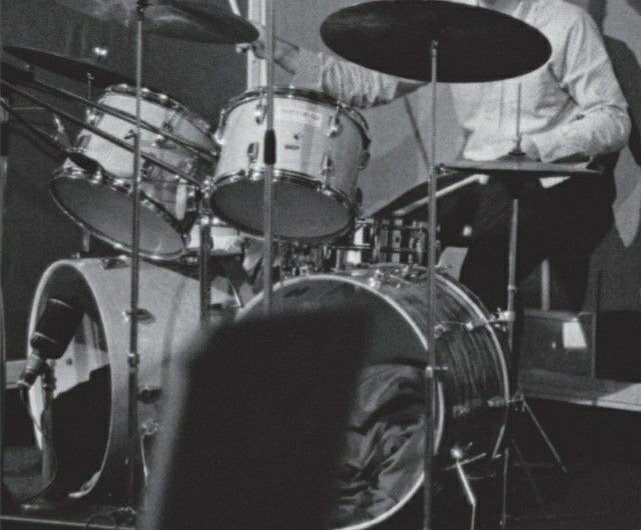 Photographic evidence shows that Paul was acquainting himself with the song on bass but then a decision was made for him to play organ on the rhythm track instead. Also, Ringo was playing a make-shift double-bass drum set on this day, a combination of a new Ludwig Hollywood Maple drum kit that he just acquired as well as his usual Ludwig Black Oyster Pearl set. "I knew we weren't goint to play live any more and the others were getting different things to use in the studio, so I thought I would get a proper kit, real drums with real skin heads...so we set them all up." Photographic evidence shows that Paul was acquainting himself with the song on bass but then a decision was made for him to play organ on the rhythm track instead. Also, Ringo was playing a make-shift double-bass drum set on this day, a combination of a new Ludwig Hollywood Maple drum kit that he just acquired as well as his usual Ludwig Black Oyster Pearl set. "I knew we weren't goint to play live any more and the others were getting different things to use in the studio, so I thought I would get a proper kit, real drums with real skin heads...so we set them all up."
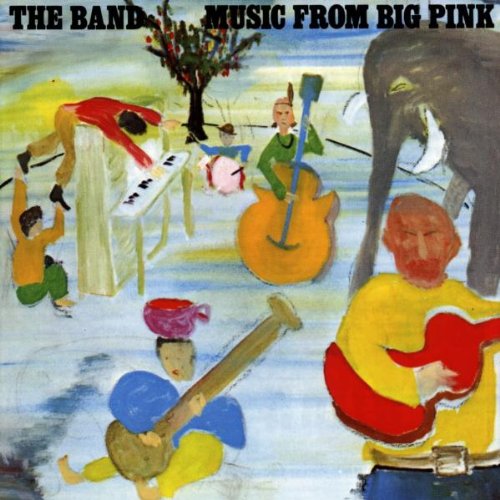 Both Paul and Ringo were very cooperative with George as they worked out the arrangement, this being evidenced when listening to their banter between recorded takes. After 'take 15,' for instance, Paul asked, "I tell you what, do you think I should be in all the time on the organ?" George responded, "I don't mind," which suggests that he wanted to feature the instrument prominently on this song. After 'take 21,' George commented about how Paul was developing his organ part by exclaiming, "Music From Big Head!" This was in reference to the album "Music From Big Pink" by The Band, which was released three months earlier and had made an impact on the group. The Lowrey organ playing by Band member Garth Hudson was a key ingredient to their sound, something that Paul seemed to be emulating. The impact of The Band on The Beatles was also evident in Paul singing a line in the chorus of their song "The Weight" during the filming of their promo for "Hey Jude." Both Paul and Ringo were very cooperative with George as they worked out the arrangement, this being evidenced when listening to their banter between recorded takes. After 'take 15,' for instance, Paul asked, "I tell you what, do you think I should be in all the time on the organ?" George responded, "I don't mind," which suggests that he wanted to feature the instrument prominently on this song. After 'take 21,' George commented about how Paul was developing his organ part by exclaiming, "Music From Big Head!" This was in reference to the album "Music From Big Pink" by The Band, which was released three months earlier and had made an impact on the group. The Lowrey organ playing by Band member Garth Hudson was a key ingredient to their sound, something that Paul seemed to be emulating. The impact of The Band on The Beatles was also evident in Paul singing a line in the chorus of their song "The Weight" during the filming of their promo for "Hey Jude."
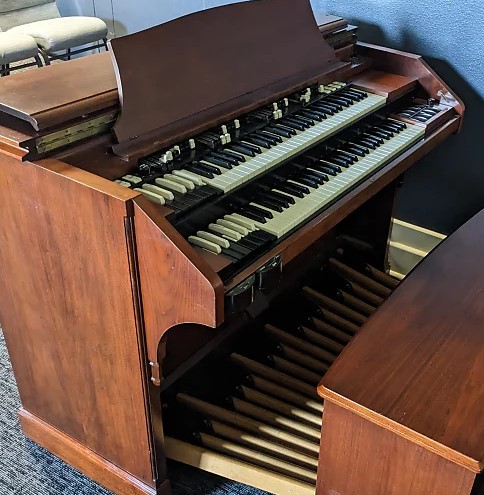 As the early morning hours were now progressing, concern may have been directed at rushing through the recording process to get it over with as, unfortunatly, had been the case years before with George compositions. This appartenly wasn't the case during this session, evidenced by Paul exclaiming after "take 29," "I don't mind how long it takes at the moment. That intro was great!" As the early morning hours were now progressing, concern may have been directed at rushing through the recording process to get it over with as, unfortunatly, had been the case years before with George compositions. This appartenly wasn't the case during this session, evidenced by Paul exclaiming after "take 29," "I don't mind how long it takes at the moment. That intro was great!"
 The full "take 44" is included on the Super Deluxe 50th Anniversary "White Album" box set. It begins with Paul fooling around on organ which prompts George to get things under control by saying: "Right, here we go. Here we go, lads! We're really not what we make out to be (laughs), that's all I can say." He then inquires of Paul and Ringo, 'Where did Mal get those joss-sticks? They're very Rishikesh joss-sticks!'” Engineer Richard Lush recounts The Beatles' habit of burning joss-sticks during their sessions: “The people at Abbey Road didn't particularly like them, especially when the carpet and the whole studio was stinking of them, be it strawberry or whatever was the flavor of the month.” The full "take 44" is included on the Super Deluxe 50th Anniversary "White Album" box set. It begins with Paul fooling around on organ which prompts George to get things under control by saying: "Right, here we go. Here we go, lads! We're really not what we make out to be (laughs), that's all I can say." He then inquires of Paul and Ringo, 'Where did Mal get those joss-sticks? They're very Rishikesh joss-sticks!'” Engineer Richard Lush recounts The Beatles' habit of burning joss-sticks during their sessions: “The people at Abbey Road didn't particularly like them, especially when the carpet and the whole studio was stinking of them, be it strawberry or whatever was the flavor of the month.”
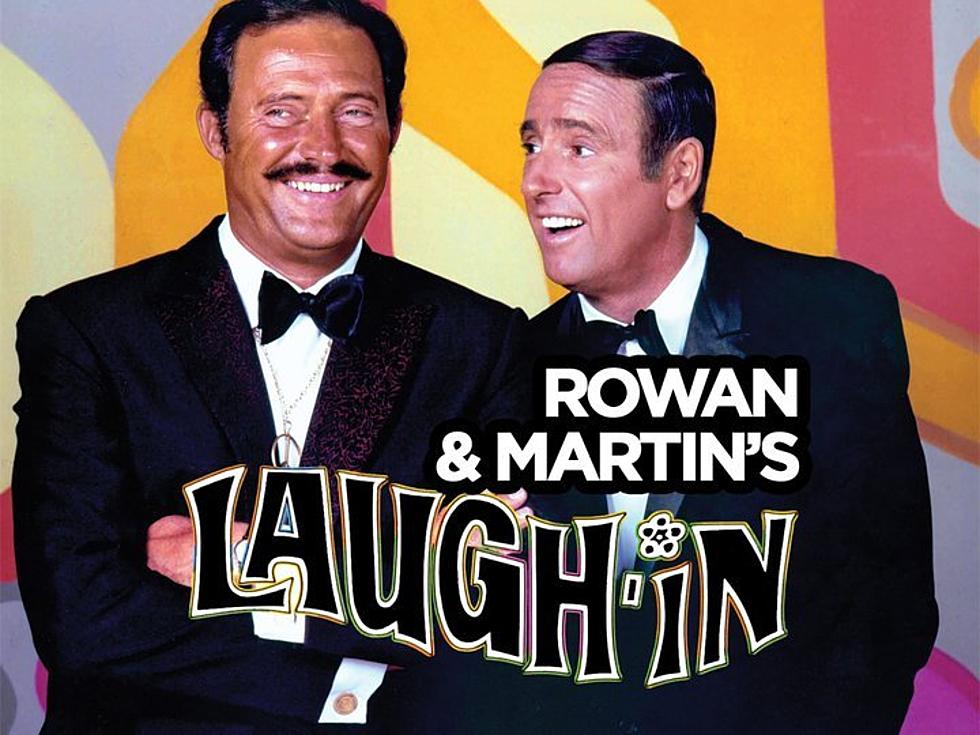 George stops the take just after Paul begins because of his acoustic guitar flub, saying, "No, no, missed it," which he follows by counting down the song a second time. The take is going quite nicely until it breaks down just after the bridge, which encourages George to start reciting lyrics to an unpublished song he had been working on entitled "Gathering Gesturing," which was an exercise in alliterative word play, while Paul and Ringo plodded on in the background. The lyrics comprised four three-syllable words per letter of the alphabet, this example being "Gathering / gesturing / glimmering / glittering / happening / hovering / humoring / hammering / laquering / lecturing / laboring / lumbering / mirroring..." before he finally gives up, periodically laughing along the way. Similar wordplay was also scribbled at the top of an early draft lyric sheet of "While My Guitar Gently Weeps," which indicates that he had been laboring over this song idea for some time. After George releaves some tension by chunking away on some guitar chords, he reels his bandmates back in by saying, "Right-o, lads, sock-it-to-me one more time," this being a reference to a catch-phrase used in the popular TV show "Roman & Martin's Laugh-In," which The Beatles all watched at the time. George stops the take just after Paul begins because of his acoustic guitar flub, saying, "No, no, missed it," which he follows by counting down the song a second time. The take is going quite nicely until it breaks down just after the bridge, which encourages George to start reciting lyrics to an unpublished song he had been working on entitled "Gathering Gesturing," which was an exercise in alliterative word play, while Paul and Ringo plodded on in the background. The lyrics comprised four three-syllable words per letter of the alphabet, this example being "Gathering / gesturing / glimmering / glittering / happening / hovering / humoring / hammering / laquering / lecturing / laboring / lumbering / mirroring..." before he finally gives up, periodically laughing along the way. Similar wordplay was also scribbled at the top of an early draft lyric sheet of "While My Guitar Gently Weeps," which indicates that he had been laboring over this song idea for some time. After George releaves some tension by chunking away on some guitar chords, he reels his bandmates back in by saying, "Right-o, lads, sock-it-to-me one more time," this being a reference to a catch-phrase used in the popular TV show "Roman & Martin's Laugh-In," which The Beatles all watched at the time.
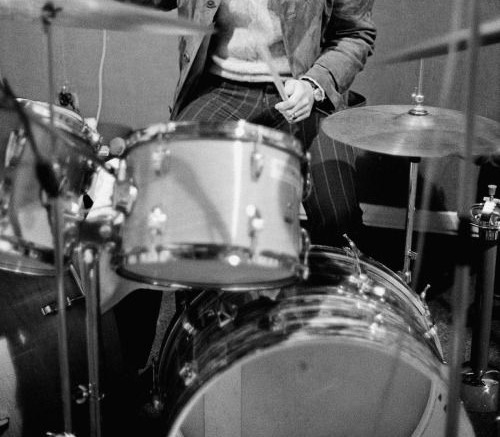 George apartently wasn't too happy with "take 48," after which he stated, "The one before that, I really felt that one was it." Paul then countered with "Now, now, don't be defeatist." Before "take 53" began, George announced, "If we don't get this one, then f*ck it. Use the one before." After "take 56," it was decided that Ringo should come in on drums earlier than he had been doing thus far, which, as witnessed on the released "take 44," was just before the bridge. From "take 57" onward, he comes in at a strategic spot of the first verse and then plays in dramatic areas of the song thereafter. George, however, began to get a little frustrated after "take 63," where he exclaims, "Come on, lads. Any of those will do me. Any of them." Nonetheless, the did carry on. George apartently wasn't too happy with "take 48," after which he stated, "The one before that, I really felt that one was it." Paul then countered with "Now, now, don't be defeatist." Before "take 53" began, George announced, "If we don't get this one, then f*ck it. Use the one before." After "take 56," it was decided that Ringo should come in on drums earlier than he had been doing thus far, which, as witnessed on the released "take 44," was just before the bridge. From "take 57" onward, he comes in at a strategic spot of the first verse and then plays in dramatic areas of the song thereafter. George, however, began to get a little frustrated after "take 63," where he exclaims, "Come on, lads. Any of those will do me. Any of them." Nonetheless, the did carry on.
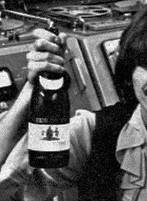 At the end of "take 65," a happy accident occurred which eventually made it onto the finished version of the song. Producer Chris Thomas, who was attending this session as George Martin's assistant, remembers: “There's a sound near the end of the song which is a bottle of Blue Nun wine rattling away on the top of a Leslie speaker cabinet. It just happened. Paul hit a certain organ note and the bottle started vibrating. We thought it was so good that we set the mikes up and did it again. The Beatles always took advantage of accidents.” At the end of "take 65," a happy accident occurred which eventually made it onto the finished version of the song. Producer Chris Thomas, who was attending this session as George Martin's assistant, remembers: “There's a sound near the end of the song which is a bottle of Blue Nun wine rattling away on the top of a Leslie speaker cabinet. It just happened. Paul hit a certain organ note and the bottle started vibrating. We thought it was so good that we set the mikes up and did it again. The Beatles always took advantage of accidents.”
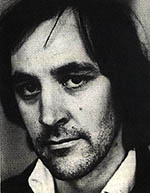 It is commonly thought that this “accident” first happened spontaneously on the take that made it onto the finished album. From the above quote by Chris Thomas, we see that this wasn't the case at all. When this did occur during "take 65," they were so enamored by the resulting rattling sound of the leftover bottle of Blue Nun wine that they brought down to the studio after their dinner in the control room that they strove to recreate it with every take thereafter. The engineering crew set up mikes to make sure it was caught on tape. It is commonly thought that this “accident” first happened spontaneously on the take that made it onto the finished album. From the above quote by Chris Thomas, we see that this wasn't the case at all. When this did occur during "take 65," they were so enamored by the resulting rattling sound of the leftover bottle of Blue Nun wine that they brought down to the studio after their dinner in the control room that they strove to recreate it with every take thereafter. The engineering crew set up mikes to make sure it was caught on tape.
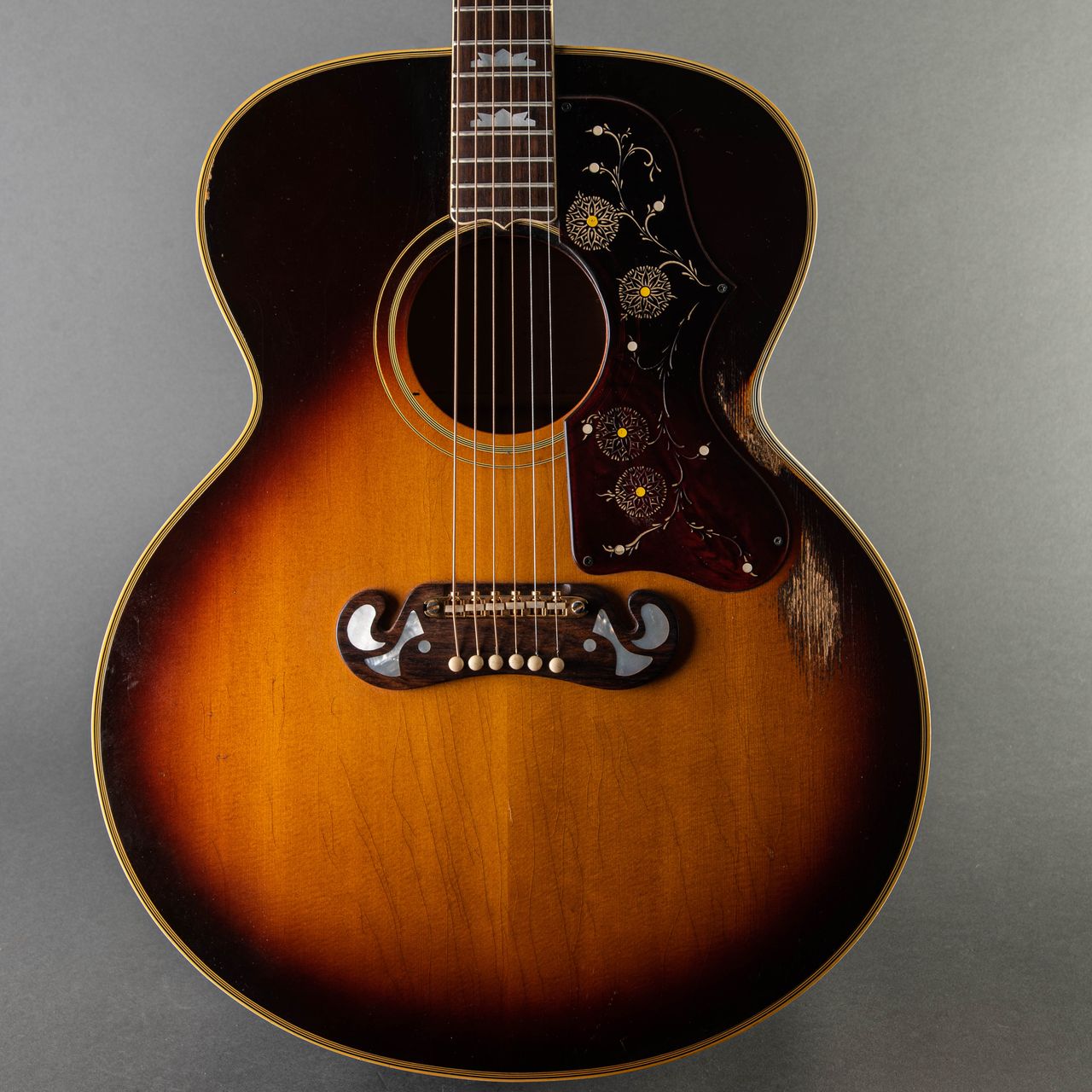 George and Ringo also added different elements to create a desired effect, this being perfectly described by Ian MacDonald in his book “Revolution In The Head” as follows: “As McCartney reached the final low inversion of C major on the group's customized Hammond organ, the bottom note vibrated a bottle of wine standing on the instrument's Leslie cabinet, creating an eery rattle. Holding his chord as a bare fifth, McCartney turned it into a spectral C minor suspended fourth, joined by Starr with a snare-roll and Harrison with a disembodied wail. Together they sustained this for thirty seconds before, with the organ and its accompanying rattle fading, Harrison gave the harmony its final twist on his Gibson J-200: a skeletal G minor eleventh, closed out by the dying fall of Starr's drums.” Therefore, just like the feedback “accident” on “I Feel Fine” four years earlier, The Beatles worked at recreating the effect for the finished recording. George and Ringo also added different elements to create a desired effect, this being perfectly described by Ian MacDonald in his book “Revolution In The Head” as follows: “As McCartney reached the final low inversion of C major on the group's customized Hammond organ, the bottom note vibrated a bottle of wine standing on the instrument's Leslie cabinet, creating an eery rattle. Holding his chord as a bare fifth, McCartney turned it into a spectral C minor suspended fourth, joined by Starr with a snare-roll and Harrison with a disembodied wail. Together they sustained this for thirty seconds before, with the organ and its accompanying rattle fading, Harrison gave the harmony its final twist on his Gibson J-200: a skeletal G minor eleventh, closed out by the dying fall of Starr's drums.” Therefore, just like the feedback “accident” on “I Feel Fine” four years earlier, The Beatles worked at recreating the effect for the finished recording.
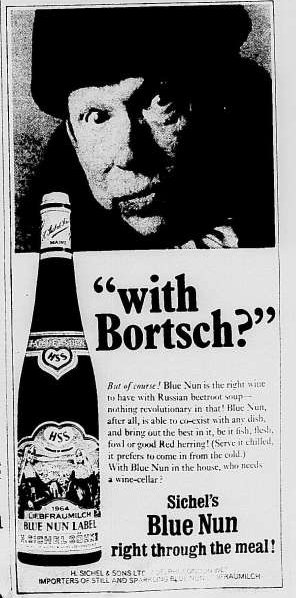 The final attempt was "take 67," which began with George stating, "Let this be the one!," to which Paul humorously replied, "I suppose it's been a long, long, long time!" With it now being near 7 am the following morning, they deemed this as the final take, complete with the rattling Blue Nun bottle, and called it for the night. The final attempt was "take 67," which began with George stating, "Let this be the one!," to which Paul humorously replied, "I suppose it's been a long, long, long time!" With it now being near 7 am the following morning, they deemed this as the final take, complete with the rattling Blue Nun bottle, and called it for the night.
The next day, or should I say nine hours later, The Beatles re-entered EMI Studio Two at 4 pm on October 8th, 1968, to add overdubs onto the song. John was present on this day, as evidenced by two new Lennon songs being recorded once these overdubs were complete (these songs being “I'm So Tired” and “The Continuing Story Of Bungalow Bill”), but he still declined to contribute to George's song, which still was titled “It's Been A Long Long Long Time.”
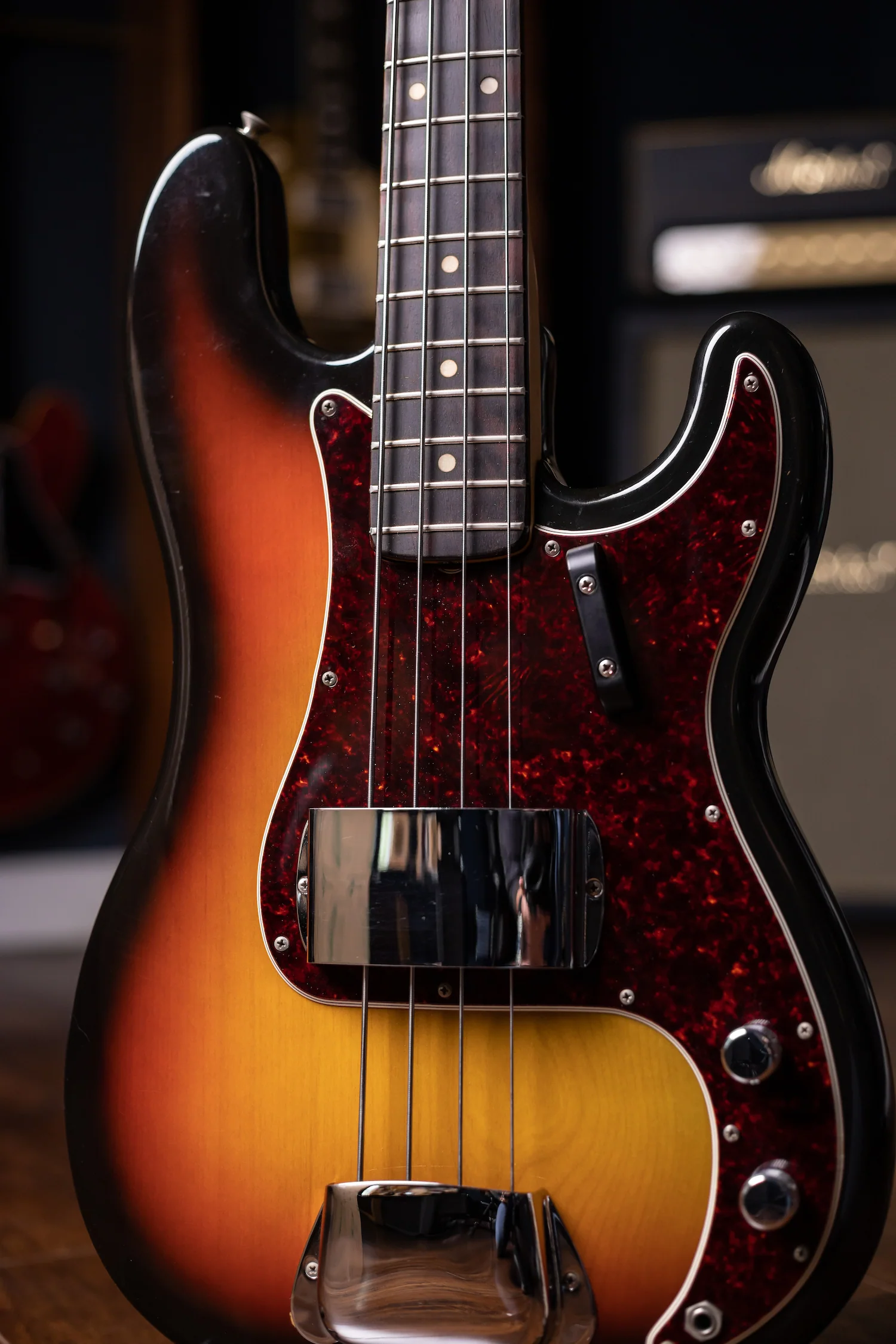 Onto the previously recorded "take 67," George double-tracked both his vocals and acoustic guitar onto track five of the tape, his guitar having a distinctive fret buzz that somewhat simulated a sitar, quite possibly because of him using a capo. Paul overdubbed bass guitar onto track six, using a Fender Jazz Bass, an instrument he recently acquired but rarely used. Onto track eight was recorded strategic harmonies by George and Paul, leaving track seven open for the time being. This was estimated to be complete by 6 pm, thereby prompting John to kick the session into high gear for recording his two songs, exclaiming, “Quick, quick, the red light's on, let's go, let's make a record!” After his two songs were fully recorded, it was 8 am the next day, this finally ending another marathon session. Onto the previously recorded "take 67," George double-tracked both his vocals and acoustic guitar onto track five of the tape, his guitar having a distinctive fret buzz that somewhat simulated a sitar, quite possibly because of him using a capo. Paul overdubbed bass guitar onto track six, using a Fender Jazz Bass, an instrument he recently acquired but rarely used. Onto track eight was recorded strategic harmonies by George and Paul, leaving track seven open for the time being. This was estimated to be complete by 6 pm, thereby prompting John to kick the session into high gear for recording his two songs, exclaiming, “Quick, quick, the red light's on, let's go, let's make a record!” After his two songs were fully recorded, it was 8 am the next day, this finally ending another marathon session.
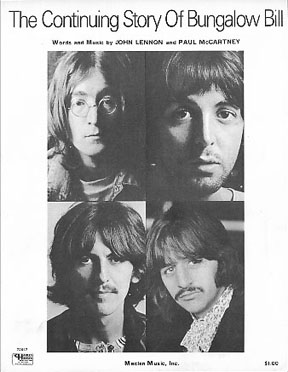 They were back again in EMI Studio Two the following day (eleven hours later, that is), October 9th, 1968, to put the finishing touches on “Long, Long, Long,” which it was now finally called, as well as other necessary business for preparing the “White Album” for release. They arrived at 7 pm on this day and, after creating stereo and mono mixes for “Bungalow Bill,” they took to adding a couple more overdubs onto George's song. They were back again in EMI Studio Two the following day (eleven hours later, that is), October 9th, 1968, to put the finishing touches on “Long, Long, Long,” which it was now finally called, as well as other necessary business for preparing the “White Album” for release. They arrived at 7 pm on this day and, after creating stereo and mono mixes for “Bungalow Bill,” they took to adding a couple more overdubs onto George's song.
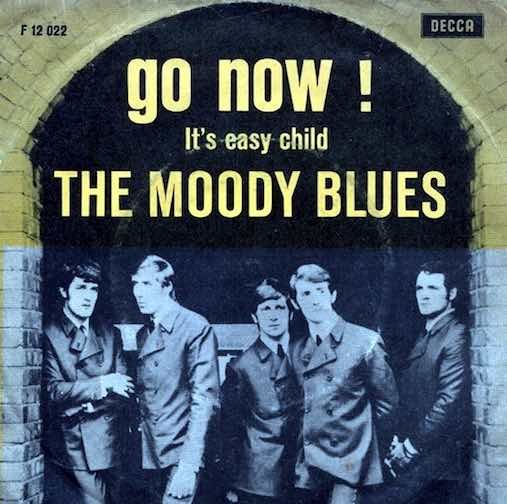 Onto track 7, which was the last open track, Paul added some sporadic backing harmonies while, more importantly, Chris Thomas took to playing some piano on the song's bridge. Chris Thomas recalled that "they said, 'Make it like The Moody Blues!'" And this he did, playing similarly to what keyboardist Mike Pinder played on their 1965 Top 10 hit "Go Now!" This completed the song, attention then going to tape copying “Helter Skelter” and also starting yet another song for last minute inclusion on the album, Paul's “Why Don't We Do It In The Road?”, this being recorded in EMI Studio One. By 5:30 am the following day, another marathon recording session was complete. Onto track 7, which was the last open track, Paul added some sporadic backing harmonies while, more importantly, Chris Thomas took to playing some piano on the song's bridge. Chris Thomas recalled that "they said, 'Make it like The Moody Blues!'" And this he did, playing similarly to what keyboardist Mike Pinder played on their 1965 Top 10 hit "Go Now!" This completed the song, attention then going to tape copying “Helter Skelter” and also starting yet another song for last minute inclusion on the album, Paul's “Why Don't We Do It In The Road?”, this being recorded in EMI Studio One. By 5:30 am the following day, another marathon recording session was complete.
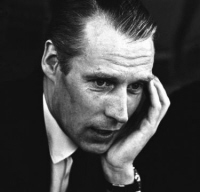 The stereo mix of the song was created first, this being on October 10th, 1968 in the control room of EMI Studio Two by George Martin and engineers Ken Scott and John Smith. Four attempts at this stereo mix were done, undoubtedly the fourth try being the one used on the finished album. George's acoustic guitar on the rhythm track was mixed quite low and the harmony on his lead vocals begins the first time he sings the word “long.” Much oscillator waggling (see “While My Guitar Gently Weeps”) was done on Paul's organ part during this mix, which presumably was done manually by Chris Thomas as he had done for previous “White Album” mixes. The stereo mix of the song was created first, this being on October 10th, 1968 in the control room of EMI Studio Two by George Martin and engineers Ken Scott and John Smith. Four attempts at this stereo mix were done, undoubtedly the fourth try being the one used on the finished album. George's acoustic guitar on the rhythm track was mixed quite low and the harmony on his lead vocals begins the first time he sings the word “long.” Much oscillator waggling (see “While My Guitar Gently Weeps”) was done on Paul's organ part during this mix, which presumably was done manually by Chris Thomas as he had done for previous “White Album” mixes.
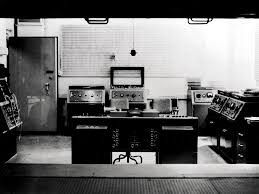 The first attempt at a mono mix was on October 12th, 1968, in the control room of EMI Studio Two by the same engineering team, however this solitary try was deemed not good enough. They tried again on October 14th, 1968, in the same studio with the same engineering team, these two attempts bringing it to a finished state, presumably "remix 3" being the keeper. The acoustic guitar from the rhythm track was substantially higher in the mix while the harmony vocal didn't kick in until the third “long” this time. More manual oscillator waggling was done on the organ on this mix as well. The first attempt at a mono mix was on October 12th, 1968, in the control room of EMI Studio Two by the same engineering team, however this solitary try was deemed not good enough. They tried again on October 14th, 1968, in the same studio with the same engineering team, these two attempts bringing it to a finished state, presumably "remix 3" being the keeper. The acoustic guitar from the rhythm track was substantially higher in the mix while the harmony vocal didn't kick in until the third “long” this time. More manual oscillator waggling was done on the organ on this mix as well.
 George Martin's son Giles Martin, along with engineer Sam Okell, returned to the master tapes to create an excellent new stereo mix of the song sometime in 2018 for inclusion in the various 50th Anniversary editions of the "White Album." While they were at it, they also created a stereo mix of "take 44" as recorded on October 7th, 1968, complete with George's recitation of his unpublished composition "Gathering Gesturing." George Martin's son Giles Martin, along with engineer Sam Okell, returned to the master tapes to create an excellent new stereo mix of the song sometime in 2018 for inclusion in the various 50th Anniversary editions of the "White Album." While they were at it, they also created a stereo mix of "take 44" as recorded on October 7th, 1968, complete with George's recitation of his unpublished composition "Gathering Gesturing."
Song Structure and Style
The struture for "Long, Long, Long" is quite simple, namely 'verse/ verse/ bridge/ verse' (or aaba) with a simple introduction and, as discussed above, an experimental conclusion. The final verse, however, has been extended by many measures for dramatic purposes. Also of note is that this is the only song on the "White Album" that is fully in a waltz-like 3/4 time signature, "Happiness Is A Warm Gun" being in the same time signature only in part.
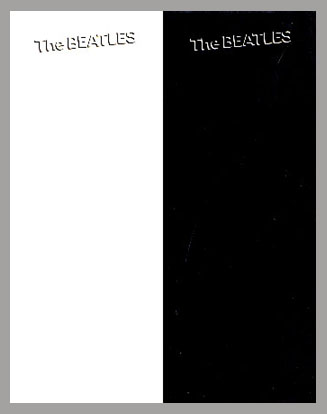 The introduction is six measures long and consists primarily of George's overdubbed acoustic lead guitar figure mimicking more clearly what he had performed during the rhythm track, Paul's organ kicking in on the third measure with a complimentary descending note counter melody. Measures five and six feature the strumming acoustic guitar of the rhythm track accompanied by a single note organ note, the sixth measure beginning George's double-tracked vocals that lead into the first verse that follows. The introduction is six measures long and consists primarily of George's overdubbed acoustic lead guitar figure mimicking more clearly what he had performed during the rhythm track, Paul's organ kicking in on the third measure with a complimentary descending note counter melody. Measures five and six feature the strumming acoustic guitar of the rhythm track accompanied by a single note organ note, the sixth measure beginning George's double-tracked vocals that lead into the first verse that follows.
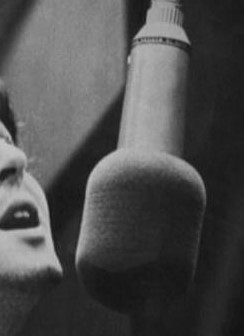 The first verse is a whopping nineteen measures long. The first ten measures feature George on acoustic guitar and lead vocals, and Paul on simple organ, plucked bass guitar notes on most downbeats, and harmony vocals on the first four measures (only measures three and four in the mono mix). Measures five and six contain the identifiable lead guitar line that George overdubbed. Measures seven through nineteen proceed with the same elements but with the addition of Ringo loudly emphasizing measures 11 through 13 and then 18 and 19 with stylish drum fills, all instruments increasing in volume during these fills. The nineteenth measure once again features the lead-in vocal line from George that segues into the second verse that follows. The first verse is a whopping nineteen measures long. The first ten measures feature George on acoustic guitar and lead vocals, and Paul on simple organ, plucked bass guitar notes on most downbeats, and harmony vocals on the first four measures (only measures three and four in the mono mix). Measures five and six contain the identifiable lead guitar line that George overdubbed. Measures seven through nineteen proceed with the same elements but with the addition of Ringo loudly emphasizing measures 11 through 13 and then 18 and 19 with stylish drum fills, all instruments increasing in volume during these fills. The nineteenth measure once again features the lead-in vocal line from George that segues into the second verse that follows.
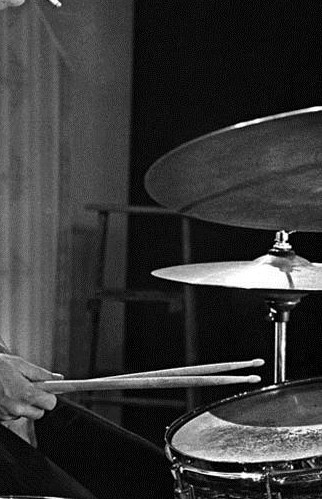 This second verse is also nineteen measures long and pretty much follows the identical instrumentation as the first verse. One difference is the slight presence of Ringo tapping out a simple snare and cymbal beat throughout the entire verse whenever he isn't pounding out the appropriate drum fills as in the first verse, and adding a couple dramatic cymbal crashes in the final measure. There are no lead-in vocals in the nineteenth measure this time around since what follows is a bridge and not another verse. This second verse is also nineteen measures long and pretty much follows the identical instrumentation as the first verse. One difference is the slight presence of Ringo tapping out a simple snare and cymbal beat throughout the entire verse whenever he isn't pounding out the appropriate drum fills as in the first verse, and adding a couple dramatic cymbal crashes in the final measure. There are no lead-in vocals in the nineteenth measure this time around since what follows is a bridge and not another verse.
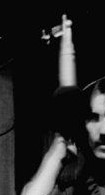 The only bridge in the song appears now, which is fifteen measures long and works as the climactic thrust of the entire song. In measures one through thirteen, George passionately performs double-tracked lead vocals while strumming acoustic guitar in the background, Paul plays higher register organ chords as well as perfunctory bass guitar, and Chris Thomas appears throughout on piano as the primary feature of this section of the song. Ringo plays a hard but simplistic waltz tempo on drums, putting in drum fills in measure four and then twelve and thirteen. Paul adds harmony vocals for the “oh – ooohhh” in measures eleven and twelve, this being the ultimate high point of the song. George's acoustic guitar from the rhythm track is still discernible during Ringo's drum fill in the thirteenth measure, this followed by a trademark 'Beatles break' in the fourteenth measure. The fifteenth and final measure of this bridge is another vocal lead-in to segue into the last verse. The only bridge in the song appears now, which is fifteen measures long and works as the climactic thrust of the entire song. In measures one through thirteen, George passionately performs double-tracked lead vocals while strumming acoustic guitar in the background, Paul plays higher register organ chords as well as perfunctory bass guitar, and Chris Thomas appears throughout on piano as the primary feature of this section of the song. Ringo plays a hard but simplistic waltz tempo on drums, putting in drum fills in measure four and then twelve and thirteen. Paul adds harmony vocals for the “oh – ooohhh” in measures eleven and twelve, this being the ultimate high point of the song. George's acoustic guitar from the rhythm track is still discernible during Ringo's drum fill in the thirteenth measure, this followed by a trademark 'Beatles break' in the fourteenth measure. The fifteenth and final measure of this bridge is another vocal lead-in to segue into the last verse.
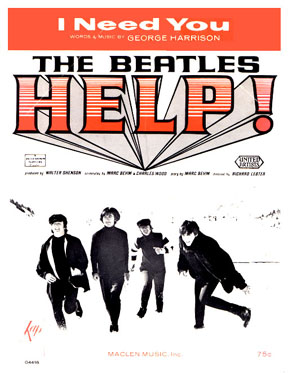 This final verse is extended to thirty measures this time, this section of the song being the most emotional segment of the song. The instrumentation is similar to the quiet first verse, one difference however being three-part harmony in the first four measures on the lyrics “see you, be you.” Ringo's only appearance in this verse is the drum fill in the eleventh through thirteenth measures and then the final cymbal crash on the downbeat of the last measure. George repeats his last vocal melody line four times in this verse, the third being slightly different on the line “you know that I need you” (possibly a hidden reference to his 1965 composition “I Need You”). The latter half of this verse shows all elements slightly increasing in volume to create a moving effect. This final verse is extended to thirty measures this time, this section of the song being the most emotional segment of the song. The instrumentation is similar to the quiet first verse, one difference however being three-part harmony in the first four measures on the lyrics “see you, be you.” Ringo's only appearance in this verse is the drum fill in the eleventh through thirteenth measures and then the final cymbal crash on the downbeat of the last measure. George repeats his last vocal melody line four times in this verse, the third being slightly different on the line “you know that I need you” (possibly a hidden reference to his 1965 composition “I Need You”). The latter half of this verse shows all elements slightly increasing in volume to create a moving effect.
After the cymbal crash we immediately hear the rattling bottle of Blue Nun which quickly develops into the eerie sound experiment that ends the song as described above.
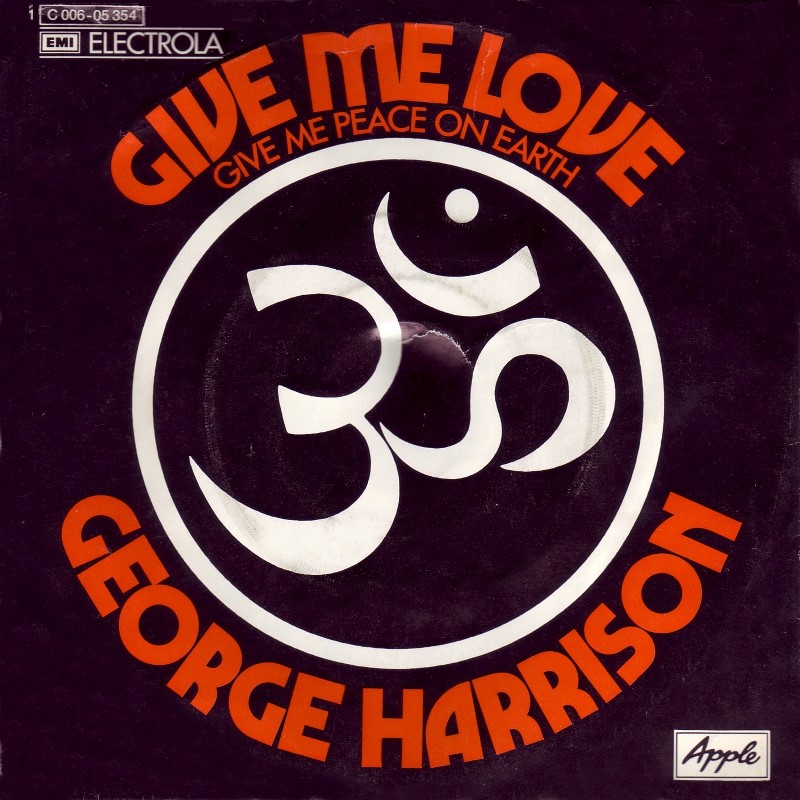 The spiritual meaning of these lyrics may have gone right over the heads of listeners in 1968 but are worth pointing out here. George wonders how he ever could “have lost you,” referring to his attaining oneness with the universal life force in a previous life (or in-between lives) and now his recent incarnation finds him attaining to that oneness once again. But now that he has attained the same degree of enlightenment in this lifetime, he again can “see you, be you,” indicating his being as one with God once again, his present life being an expression of his creator in human form. A future reincarnation, he accepts, will put him back into yet another separation from God, where he will yet again “misplace” his oneness with Him only to strive to recapture it then, and on and on it goes until reaching full enlightenment when he will then be “free from birth” as he states in his 1973 song “Give Me Love (Give Me Peace On Earth).” The spiritual meaning of these lyrics may have gone right over the heads of listeners in 1968 but are worth pointing out here. George wonders how he ever could “have lost you,” referring to his attaining oneness with the universal life force in a previous life (or in-between lives) and now his recent incarnation finds him attaining to that oneness once again. But now that he has attained the same degree of enlightenment in this lifetime, he again can “see you, be you,” indicating his being as one with God once again, his present life being an expression of his creator in human form. A future reincarnation, he accepts, will put him back into yet another separation from God, where he will yet again “misplace” his oneness with Him only to strive to recapture it then, and on and on it goes until reaching full enlightenment when he will then be “free from birth” as he states in his 1973 song “Give Me Love (Give Me Peace On Earth).”
 John Lennon may not have chosen to participate in the recording of the song, but The “Threetles” put in a very spirited performance with Chris Thomas adding a helping hand along the way. As many authors and fans have come to discover, this three minute moment of spiritual clarity and meditative solitude works beautifully amid the extreme variety contained on this masterful album. John Lennon may not have chosen to participate in the recording of the song, but The “Threetles” put in a very spirited performance with Chris Thomas adding a helping hand along the way. As many authors and fans have come to discover, this three minute moment of spiritual clarity and meditative solitude works beautifully amid the extreme variety contained on this masterful album.
American Releases
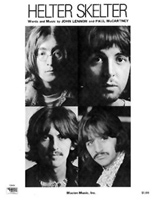 November 25th, 1968 was the date of the American release for the group's double-album entitled "The Beatles," affectionately known as the "White Album." The ultra-mellow "Long, Long, Long" was relegated to the final selection of side three just after the raucous "Helter Skelter" blasted out of the listener's speakers. The album got its first compact disc release on August 24th, 1987, then as a 30th Anniversary limited edition release on November 23rd, 1998, and then as a re-mastered CD set on September 9th, 2009. It wasn't released individually as a mono album in the US until its vinyl release on September 9th, 2014, while a vibrant new stereo vinyl edition was released on November 9th, 2018 for its 50th Anniversary. November 25th, 1968 was the date of the American release for the group's double-album entitled "The Beatles," affectionately known as the "White Album." The ultra-mellow "Long, Long, Long" was relegated to the final selection of side three just after the raucous "Helter Skelter" blasted out of the listener's speakers. The album got its first compact disc release on August 24th, 1987, then as a 30th Anniversary limited edition release on November 23rd, 1998, and then as a re-mastered CD set on September 9th, 2009. It wasn't released individually as a mono album in the US until its vinyl release on September 9th, 2014, while a vibrant new stereo vinyl edition was released on November 9th, 2018 for its 50th Anniversary.
.jpg) An interesting release of the song was on a short lived format called “Playtapes,” which became popular in the later '60s because of its portability, these tapes manufactured to be exclusively played on portable “Playtape” machines and as standard equipment in Volkswagen cars at that time. Because of the limited space on these tapes, five volumes of “White Album” tapes were released so those with these machines could enjoy most of this new album. Therefore, sometime in 1969, Capitol released these five tapes, “Vol. V” containing "Long, Long, Long." An interesting release of the song was on a short lived format called “Playtapes,” which became popular in the later '60s because of its portability, these tapes manufactured to be exclusively played on portable “Playtape” machines and as standard equipment in Volkswagen cars at that time. Because of the limited space on these tapes, five volumes of “White Album” tapes were released so those with these machines could enjoy most of this new album. Therefore, sometime in 1969, Capitol released these five tapes, “Vol. V” containing "Long, Long, Long."
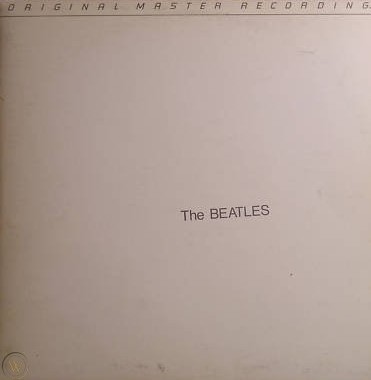 An interesting US vinyl edition of the “White Album” was released on January 7th, 1982, this being manufactured by Mobile Fidelity Sound Lab in Chatsworth, California as part of their "Original Master Recording" series. Their practice was to prepare a new master utilizing half-speed mastering technology from the original master tapes, in this case using the leased sub-master from Capitol Records. This release, which sounded superior to to all previous British and American pressings, was packaged in a non-embossed unnumbered cover that did not include the usual poster/lyric sheet or individual Beatles portraits as contained in standard releases. Nonetheless, this excellent edition of the album was only available for a short time and is quite collectible today. An interesting US vinyl edition of the “White Album” was released on January 7th, 1982, this being manufactured by Mobile Fidelity Sound Lab in Chatsworth, California as part of their "Original Master Recording" series. Their practice was to prepare a new master utilizing half-speed mastering technology from the original master tapes, in this case using the leased sub-master from Capitol Records. This release, which sounded superior to to all previous British and American pressings, was packaged in a non-embossed unnumbered cover that did not include the usual poster/lyric sheet or individual Beatles portraits as contained in standard releases. Nonetheless, this excellent edition of the album was only available for a short time and is quite collectible today.
The entire mono catalog of The Beatles was first released on September 9th, 2009 in the CD box set entitled “The Beatles In Mono,” this being the first time the US market could enjoy the more defined “Long, Long, Long” in all its mono glory. The vinyl edition of this box set was first released on September 9th, 2014.
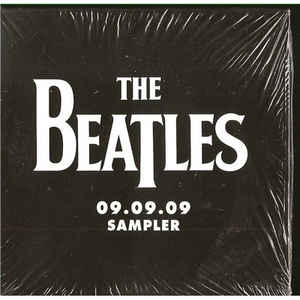 Also released on September 9th, 2009, in promotion of the remastered Beatles catalog, the "09.09.09 Sampler" was distributed to retailers and radio programmers, "Long, Long, Long" being featured therein. This has become quite the find for collectors. Also released on September 9th, 2009, in promotion of the remastered Beatles catalog, the "09.09.09 Sampler" was distributed to retailers and radio programmers, "Long, Long, Long" being featured therein. This has become quite the find for collectors.
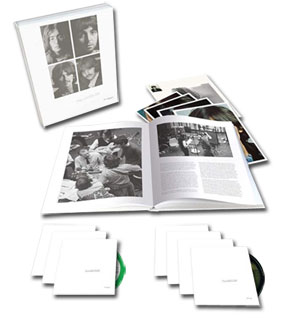 Various editions of the "White Album" were released on November 9th, 2018 to commemorate the 50th Anniversary of its original release. The "Deluxe" edition, which was made available in a 3CD set and a limited edition 180-gram 4LP vinyl set, contained the newly created Giles Martin mix of the "White Album." The "Super Deluxe" 6CD + 1Blu-ray edition also contained "take 44" of the rhythm track of "Long, Long, Long" as recorded on October 7th, 1968. Various editions of the "White Album" were released on November 9th, 2018 to commemorate the 50th Anniversary of its original release. The "Deluxe" edition, which was made available in a 3CD set and a limited edition 180-gram 4LP vinyl set, contained the newly created Giles Martin mix of the "White Album." The "Super Deluxe" 6CD + 1Blu-ray edition also contained "take 44" of the rhythm track of "Long, Long, Long" as recorded on October 7th, 1968.
Live Performances
The Beatles never performed the song live and, unfortunately, George neglected to include it in any of his concert set lists during his solo career.
Conclusion
"Long, Long, Long" was the first song George Harrison wrote that directly addresses God. As mentioned above, the ambiguous nature of the lyrics made it appear as if he was singing to a woman, this approach taken to make the subject matter more palatable for Beatles audiences. After all, the vast majority of Beatles songs, especially in the first half of their career, were lyrically concerning romantic relationships. Beatles fans would have no reason to think otherwise about this song.
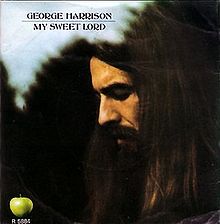 However, George would have no qualms about singing directly to God during his solo career, even addressing him by name (or many of his perceived names). His spirituality was then more important to him than what he though the public at large might think, so he didn't bother much with ambiguous lyrics any more. And how did his fans react? Two personal addresses to God made it to #1 on the US Billboard Hot 100, namely, “My Sweet Lord” and “Give Me Love (Give Me Peace On Earth).” “Hear Me Lord,” “The Lord Loves The One (That Loves The Lord),” “It Is He (Jai Sri Krishna)” and "Fish On The Sand" are among other George Harrison song titles that show that he was determined to express his spirituality no matter what others thought about it. His popularity was of a much lesser concern for him. “I wouldn't really care if no one ever heard of me again” he said to Record Mirror in 1972. The result, of course, was a post Beatles career that is viewed worldwide with deep respect. And well deserved! However, George would have no qualms about singing directly to God during his solo career, even addressing him by name (or many of his perceived names). His spirituality was then more important to him than what he though the public at large might think, so he didn't bother much with ambiguous lyrics any more. And how did his fans react? Two personal addresses to God made it to #1 on the US Billboard Hot 100, namely, “My Sweet Lord” and “Give Me Love (Give Me Peace On Earth).” “Hear Me Lord,” “The Lord Loves The One (That Loves The Lord),” “It Is He (Jai Sri Krishna)” and "Fish On The Sand" are among other George Harrison song titles that show that he was determined to express his spirituality no matter what others thought about it. His popularity was of a much lesser concern for him. “I wouldn't really care if no one ever heard of me again” he said to Record Mirror in 1972. The result, of course, was a post Beatles career that is viewed worldwide with deep respect. And well deserved!
Song Summary
“Long, Long, Long”
Written by: George Harrison
- Song Written: August, 1968
- Song Recorded: October 7, 8 and 9, 1968
- First US Release Date: November 25, 1968
- First US Album Release: Apple #SWBO-101 “The Beatles”
- US Single Release: n/a
- Highest Chart Position: n/a
- British Album Release: Apple #PCS 7067-7068 “The Beatles”
- Length: 3:08
- Key: F major
- Producer: George Martin
- Engineers: Ken Scott, Mike Sheady, John Smith
Instrumentation (most likely):
- George Harrison - Lead Vocals, Lead and Rhythm Guitars (1968 Gibson J-200 )
- Paul McCartney - Organ (Hammond RT-3 w/ Leslie 145 cabinet), Bass (1966 Fender Jazz Bass), backing vocals
- Ringo Starr - Drums (1964 Ludwig Super Classic Black Oyster Pearl, 1968 Ludwig Hollywood Maple)
- Chris Thomas - Piano (Hamburg Steinway Baby Grand)
Written and compiled by Dave Rybaczewski
|
IF YOU WOULD LIKE TO MAKE A DONATION TO KEEP THIS WEBSITE UP AND RUNNING, PLEASE CLICK BELOW!
Sign Up Below for our MONTHLY BEATLES TRIVIA QUIZ!
|